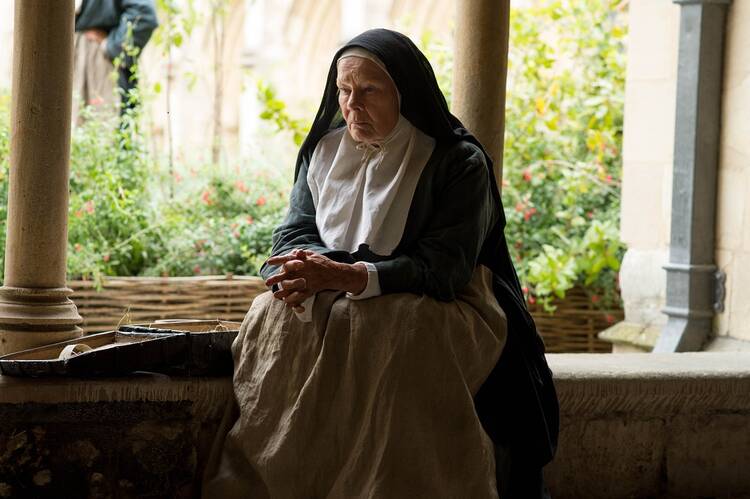Someone accustomed to living in a so-called "Post-Christian era” may be confused by “Tulip Fever,” the costume drama/thriller that opened on Sept. 1, based on the novel of the same name by Deborah Moggach. It is not the setting (Amsterdam in the 17th century) or the situation (an adulterous affair) that are confusing. Moviegoers might not even be confused by the complex subplots of switched identities and the workings of the Tulip Bubble, which makes the bidding on the floor of the New York Stock exchange look positively stately. (The lovers hope to escape by investing their scant resources in the tulip market.)
What makes this movie different is the role of faith in the lives of the characters and the society in which they live. The director, Justin Chadwick, and screenwriters Moggach and Sir Tom Stoppard have created a film that reminds people that there was a time in which religious faith was the ocean in which people swam.
Maybe the most refreshing thing about Dame Judi’s nun is that she is a sane and decent human being.
The film starts in a convent. The lovely orphan, Sophia (Alicia Vikander), is the oldest of a group of girls raised by nuns. The Abbess of St. Ursula (Dame Judi Dench) arranges Sophia’s marriage to the wealthy, older merchant, Cornelis Sandvoort (Christopher Waltz), telling her that marriage is a secure future for an orphan and reminding her of the marriage vows to love, honor and obey. While the Tulip Bubble rages throughout Amsterdam, Sophia has a passionate affair with the artist her husband hired to paint their portrait, taking risk after desperate risk in a way that engulfs the entire household. (“Tulip Fever” was made in 2014, but took three years to release in theaters.)
During the Tulip Bubble, everyone speculated on tulip bulbs, risking all in a gamble on what color tulips the bulbs would yield, and hoping for the ultimate prize—the tulip with striped, or “broken” petals. Tulips appear throughout the film, symbols of risk and earthly vanity, echoing the convention in Northern European painting called vanitas, which uses beautiful things such as flowers to show the transitory nature of life.
In the middle of the various plotlines, faith makes a recurring appearance. The main characters pray: Cornelis prays for his dearest wish, that his wife conceives a healthy child; Sophia prays for strength against temptation and for help in an increasingly difficult and risky situation. Characters pray for guidance, for help, for thanksgiving.
This all may seem mundane—people pray, so what? But in today’s culture a routine engagement of religion in a movie, without commentary by the director on their religious practices, is not so ordinary. Often films today present a character’s kneeling before God as “sweet” or “naive,” or a rote practice born of harsh duty.
The Abbess, a pivotal character, is a practical and enterprising character who understands both human and divine nature. She dabbles in the tulip business herself, farming tulips in the convent courtyard to raise her own bulbs and renting out the rest to others who trust the convent as an honest player. When the artist seeks her advice on a risky scheme, she does not judge him or Sophia. She does warn him: “Never underestimate God. He forgets nothing.” Maybe the most refreshing thing about Dame Judi’s character is that she is a sane and decent human being. She has not fallen for a man or lost her faith. She is not painfully sweet, awkward or daffy. She bears none of the usual tropes of a cinematic nun. She is someone to take seriously.
Without giving anything away, the fim’s climax is a powerful and unironic affirmation of God’s work in people’s lives. Perhaps it takes a period costume drama like “Tulip Fever” to show that for a great many people, church, religion and faith are the motifs of their lives—they live in it, rejoice in it, find comfort and peace in it in times of trouble. It is not a shocking theme for most Christians, but it is surprising and hopeful to see in a new film.









